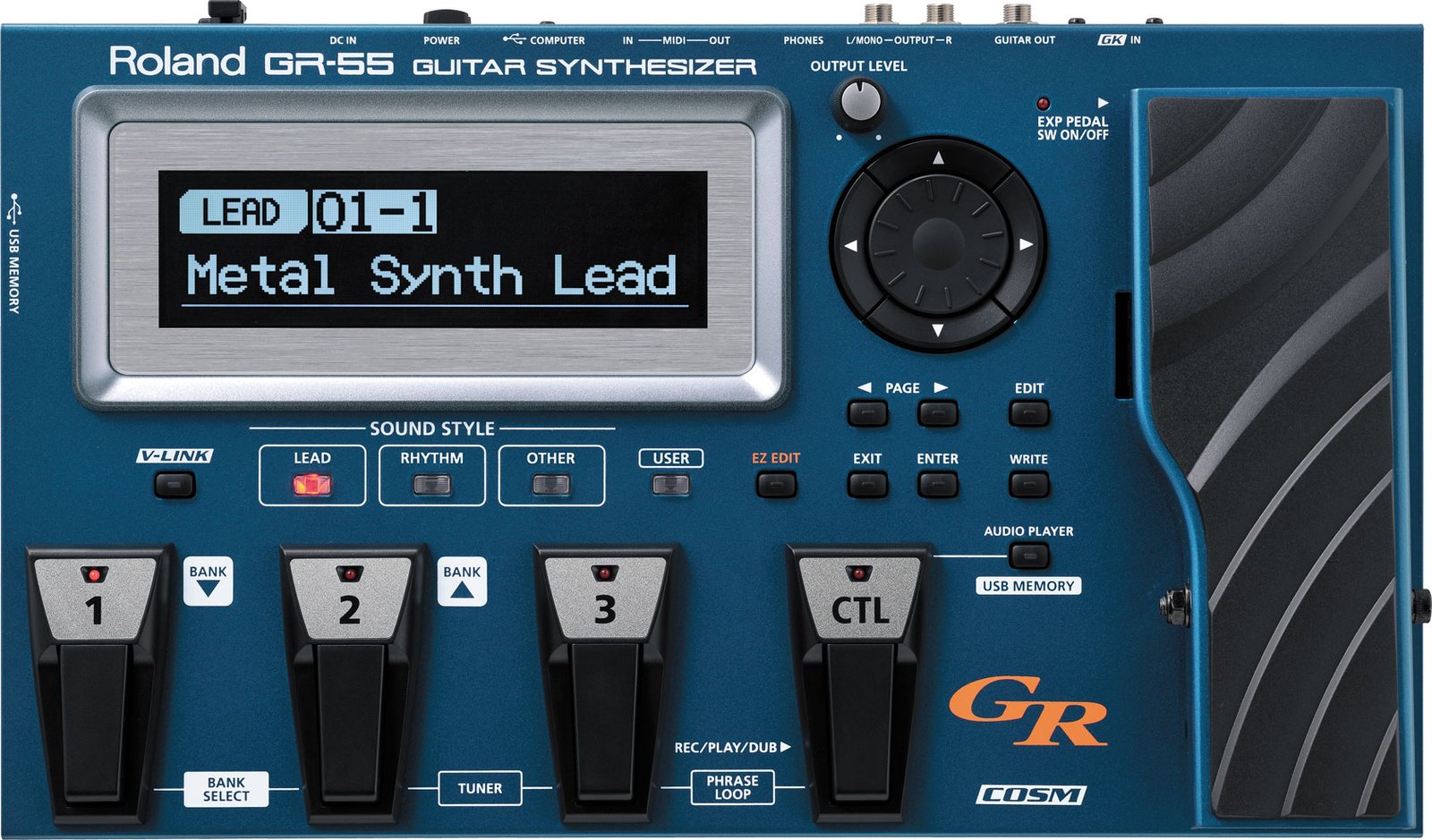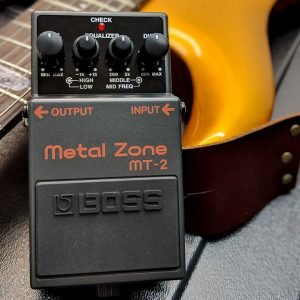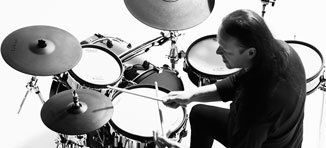Karnivool- Guitarist Drew Goddard
Photography by Kane Hibberd
Karnivool play a brand of rock that messes with your head, particularly on their new album Asymmetry. One minute you’re lost in a mind-meandering, ambient melody and the next you’re sharply awoken by a deep crunching bass riff, like you’ve just had a chilling cup of cold water thrown in your face. It’s heavy, it’s melodic, it’s experimental, therefore their musical peg, for better or worse, gets assigned to the prog-rock pigeonhole automatically. It’s a style of music which has resulted in Karnivool touring the world playing to an ever-increasing international audience. Before the band flew out of Australia for an extensive Eurpopean tour, Greg Phillips spoke to guitarist Drew Goddard about the Karnivool sound.
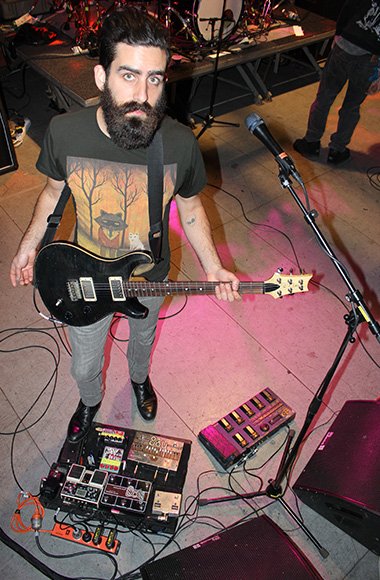 Usually when talking to a band about a new album, we talk about the writing of it. However, with Asymmetry it seems more like it was constructed piece by piece rather than written. Is that a fair comment?
Usually when talking to a band about a new album, we talk about the writing of it. However, with Asymmetry it seems more like it was constructed piece by piece rather than written. Is that a fair comment?
Definitely. The writing process was always a long-winded one. Some songs we work up to a certain point and then we leave them and they gestate a little bit. We’ll get back to them at a certain point … if we hit a brick wall, or not even that. Sometimes something new we are working on will come up and we’ll go off on a tangent on that. But yes it is a very broken up process. Every song is its own challenge. Some songs come together quite quickly and we’ve had songs which have taken up to six years to write. It’s an interesting process and one that we are mystified by a little bit. The process for us is not really having a formula.
Your guitar parts aren’t traditional lead breaks, it’s more about textures and sometimes even difficult to know what’s guitar and what’s keyboard etc. Do you enjoy that style of playing?
I’m kind of drawn to textural and colourful lines. Sometimes you have to find a way to colour it or add a mood or texture over the top as opposed to something that is up the front. Especially since Sound Awake, the last record, I joke around with Jon the bass player and say he riff-blocks me quite a lot! It’s a monstrous bass sound which he has developed over the last three albums … but sometimes he takes more of a backseat. Jon also writes quite a few guitar parts and we write a lot together. When you talk colour and texture, it’s almost like each song I start with a palette to work with. There might be a certain series of notes or a scale, something that pricks my ears up and sounds fresh and moves me … a sequence of chords or a simple harmony, inversions or what-not. I usually tend to go for things that I haven’t heard before which puts me in a strange environment.
There is so much in the album with so many layers of sounds, is there ever consideration that it may be difficult to reproduce live? Does that come into the equation?
Sometimes it does. This album was much more of a live sounding record. It was kind of a mental construct from the outset that we wanted it to sound like a band in a room so a lot of the guitar parts are one guitar left, one guitar right and most of the time they are playing something different. There are quite a few bits where there is a third guitar line but it’s one of those things where, we’ll say, let’s worry about that later. With this album I think we exercised a little more restraint as far as not using an incredible amount of layers like we did on Themata. I remember there was one song which had 128 tracks on it, which is cool in itself but we wanted to let the sounds breathe a little more. When there are more things in the mix, sometimes you don’t pick up on the subtle nuances and harmonics in some of the instruments and the chords. Everything breathes a little more on this one.
Is there ever a fear that there will be so much to remember in a show, that you get to a point that you can’t enjoy the playing?
Yeah. The idea is that you try to rehearse the songs enough that when we get on tour, you don’t have to think on stage. Usually the first few shows when you’re playing a song that you haven’t played live before, there’s always some thinking involved and it’s not ideal. Things like when to hit pedals … that kind of stuff just gets committed to muscle memory after a while playing it over and over. It’s a matter of getting everyone to the same place and going through it in your own time. I’ve always said that one show is worth twenty rehearsals, it does the same thing. You’re on the spot and forced to commit it to muscle memory.
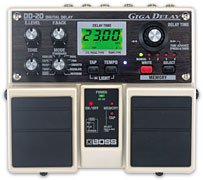 You had the Roland GT-3 effects processor as part of your sonic arsenal for a long time, have you upgraded yet?
You had the Roland GT-3 effects processor as part of your sonic arsenal for a long time, have you upgraded yet?
I do still have that. I bought that back in ’99 in London and it did me well for quite a while. It has been something I have tried to phase out a couple of times but I keep going back to it because it is so familiar and because I use so much delay and quite a few variables to do with the delay. The multi FX just seem to work. But the DD-20 (Giga Delay) is the other Boss delay I get a lot of use out of. I’ve also used DD-3’s and DD-6’s. The Roland Space Echo (RE-20) got a good work out in the studio too.
Do you remember the first Boss pedal you ever bought?
I think it would have been the GT-3, the multi-effects and then I got some stomp boxes after that. I think the OC-2 was a pretty early one and then the OC-3 later after that. Then a loop station. I think it was the RC-20 first and I replaced that later with the two. Hoss, our other guitarist has a bunch of Boss stomps as well, the OC-3, a phaser, the DS-1 (Distortion) which is just kind of wrong sounding, squealy and cool, nasty overdriven sounds and out of control feedback … that kind of thing. A big part of Hoss’s set up is the GK MIDI pick up system and he recently got the new MIDI board, the blue one that the GK runs into, the GR-55.
Are you running any samples on stage now?
We’ve got some things on a sequence, but that’s pretty much just the stuff we can’t trigger live. We do have an old Roland SPD we’ll be replacing with the new one shortly. We’ve had that a long time and it’s had a lot of love. Hoss will trigger a few things from his MIDI board. There are a couple of random pads that Steve has set up, I think it’s the TD-8 and TD-10 pads. That’s pretty much it and Hoss does a lot from his GK, there are certain things he can trigger from that.
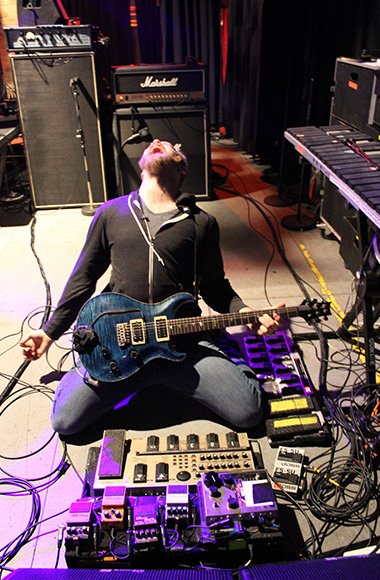 What Boss stomp boxes do you have on stage?
What Boss stomp boxes do you have on stage?
At the moment I have got the OC-3 (Super Octave), the DD-20, two of them actually because I need more presets. The RC-2 is in there. Sometimes I will take with me the DD-6. I run a DD-6 for the mandolin into the loop station.
What tunings are you using in a show now?
I don’t know how long you’ve got … the main one, the one we call the standard Karnivool tuning, which was pretty much on every song on Themata then only two songs on Sound Awake. So basically it’s drop B, B F# B and then G B E. So the first 3 strings are left in standard. There’s like a flat six jump between the third and fourth strings. We have so many tunings, it’s a way I try to keep things fresh, messing with the tunings a lot. There’s an open D minor 9, D A D F A E and that’s on All I Know and Set Fire To The Hive and there’s a capo on fifth for that same tuning. I’ve been messing around with having a strange interval between the 5th and the 6th, the thicker strings, like a flat 5th or flat 6th. There’s one on Alpha Omega which is that same D A D tuning but you drop the D down to a C sharp and you can get some funky results with that. We’ve also been messing around with a lot of baritone stuff as well which is getting down to your G and F sharp. I’ve got a 6 string baritone with a 74 on the bottom and the tuning is GDGGDF, which has got an octave jump between the 3rd and 4th string. A lot of the time Hoss and I will be in alternate tuning to each other, we’re in slightly different registers, especially with the baritone stuff. There are a couple of songs where I’m down in G and he’s up in B and playing different inversions. Jon the bass player plays a six string as well. Half the time he plays guitar style melodies on top. So if he is up in the upper register, someone else will take the lower register on the guitars. Sometimes we’re both in the lower register and just adding the hair to the bass sound.
How do you arrange the order of your pedals in your board?
Most of my effects are run through the front of the amp. Actually I have started putting the tuner last in the chain. You can bypass it basically and when you unplug stuff in the middle, it doesn’t crackle and pop, plus you can know if your signal has gone as well. If you see that something in your chain of effects is not getting through to the tuner, then you know something is up. I usually have my delays towards the end of the chain, my wahs at the front, most of the fuzzes and octaves towards the front. The other thing I have been doing is running a switching system, so every pedal is on its own loop. Not every pedal is a true bypass. After running them like this, it really does clean the sound up a lot. Then I’ve always run the Boss GT-3 in the effects loop. I think there is a huge difference in character between the sound in the effects loop and the sound through the front of the amp, especially the modulation effects and the delays … being before the preamp or after the preamp has a big affect.
 Do you think you’ll ever be content with a stage set up or will you continually search out things to try?
Do you think you’ll ever be content with a stage set up or will you continually search out things to try?
There are some staples that you always find yourself coming back to that provide certain elements to my playing and Karnivool’s sound that you can’t really take out. It’s always a never-ending search. It’s not just guitar. It’s anything that can make an interesting sound, whether it’s technology or organic instruments. We’re very much into expanding our horizons and trying to think of new and fun ways to make sounds and warp sounds. That’s most of the fun for me actually, that sort of stuff and sometimes I get very much caught up in it and forget to write songs.
Apart from your guitar, what’s one piece of gear you couldn’t do without?
Probably my drum kit because that was my first instrument. Even though for the last ten years I have been focusing on guitar, I still consider myself a drummer at heart. I approach the guitar quite rhythmically in a number of ways.
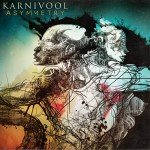 You had a Nirvana tribute band. Is that that something you still return to?
You had a Nirvana tribute band. Is that that something you still return to?
Yeah, that just started as a bit of fun with some friends. It’s how we all started playing music so it’s a bit of a getting back to the roots kind of thing … make some simple punk rock. We’re playing at a mates 30th in December in his backyard. It’s nothing we are going to take any further than that. I’m working on a few things now for myself, outside of Karnivool. The other guys have a few bands on the side so everyone keeps very busy.
www.karnivool.com.au


